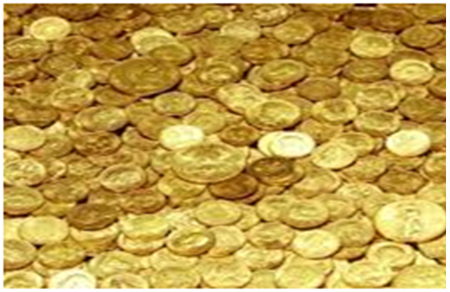
Learn to identify and Understand Condition Rarities in Coin Collecting
In the realm of numismatics, the condition of a coin is one of the most critical factors influencing its value. While rarity based on mintage numbers and historical significance is well understood in the coin collecting world, the concept of “condition rarity” is equally important but sometimes less appreciated by newcomers. This article delves into what condition rarities are, why they matter, and how they can significantly impact the value of a coin.
What are Condition Rarities?
Condition rarity refers to coins that are not necessarily rare due to their mintage but become exceptional due to their state of preservation. A coin can be common in lower grades but might be exceedingly rare in higher grades. For instance, a coin that was widely circulated might have numerous surviving examples in worn conditions, but very few in near-mint or mint condition. These high-grade examples of otherwise common coins are considered condition rarities.
The Importance of Condition in Numismatics
- Grading and Value: The grade of a coin plays a pivotal role in determining its market value. Coins are graded on a scale from 1 to 70 by professional grading services, with 70 being perfect, uncirculated condition. Coins that achieve high grades and are in superior condition often demand exponentially higher prices than the same type of coins in lesser conditions.
- Market Demand: Condition rarities often create significant demand among collectors who are looking to enhance their collections with the best-preserved examples of coins. This demand can drive prices up, particularly at auctions where collectors compete for the finest known specimens.
- Investment Potential: Coins that are condition rarities can be excellent investments. As more collectors enter the market and seek the highest quality coins, the value of these superior condition coins often increases. They are seen as safe havens because their scarcity and quality will always be in demand.
Examples of Condition Rarities
For Example, consider the 1943 copper penny, which is already a rarity because nearly all pennies from 1943 were made of steel due to wartime metal rationing. Most surviving copper pennies from this year are in circulated conditions. However, a 1943 copper penny in a pristine, uncirculated condition is a condition rarity and can fetch over a million dollars at auction, as opposed to a few hundred thousand for those in less stellar grades.
Another example is the 1916-D Mercury dime. While its mintage numbers make it rare, finding this coin in uncirculated (MS) condition is even rarer. A 1916-D Mercury dime in Good (G) condition might be worth a few hundred dollars, but in MS condition, its value can escalate into the tens of thousands.
The 1901 Philadelphia Morgan Dollar serves as a fascinating example of a “condition rarity” within the field of numismatics. While the 1901 Morgan Dollar itself is not uncommon, finding this coin in high-grade condition is extremely challenging, making it a notable condition rarity.
The Rarity of the 1901 P Morgan Dollar
The 1901 Morgan Dollar minted in Philadelphia had a substantial production of over 6.9 million coins. Despite this large mintage, the survival rate of these coins in higher grades is significantly lower than many other Morgan Dollar issues, particularly because of the way they were stored and handled at the time.
The Impact of Condition on Value
For the 1901 Philadelphia Morgan Dollar, the condition dramatically impacts its market value:
- Common in Lower Grades: In grades like Very Fine (VF) or even Extremely Fine (XF), the 1901 P Morgan Dollar remains relatively affordable, often available for just a few hundred dollars, aligning with many common-date Morgan Dollars.
- Rarity in High Grades: The scenario changes dramatically as the grade increases. In uncirculated conditions, particularly in grades MS-65 and above, the 1901 P becomes a significant rarity. The coin in MS-65 condition, for example, can command prices over $400,000 whicle one ms 66 can fetch $587,000, quite a contrast to its more modest valuations in lower grades.
Factors Contributing to Its Rarity in High Grades
Several factors contribute to the rarity of the 1901 P Morgan Dollar in high grades:
- Poor Strikes: Many of the Morgan Dollars from this year were poorly struck, which affects the level of detail visible on the coin, an essential factor in grading.
- Bag Marks and Wear: These coins were typically stored in large canvas bags where they would rub against each other, resulting in bag marks that reduce the grade. The extent of these marks is much less forgiving in the higher grade assessments.
- Circulation: Many 1901 dollars entered circulation, which naturally exposed them to wear and reduced the number of high-grade survivors.
Identifying and Assessing Condition Rarities
- Professional Grading: Getting coins professionally graded by reputable services like PCGS (Professional Coin Grading Service) or NGC (Numismatic Guaranty Corporation) is crucial to establish their condition accurately.
- Market Research: Understanding the market and prices realized at auctions can provide insights into how much value a high-grade condition adds to a coin.
- Preservation: For collectors who own or are considering purchasing older coins, understanding and implementing proper storage and handling techniques is key to preserving condition and, by extension, value.
Condition rarities are a fascinating aspect of coin collecting that underscores the importance of preservation and care in building a valuable collection. These rarities highlight how even common coins can become extraordinary treasures when they survive in exceptional condition. Collectors who understand and seek out these condition rarities can significantly enhance both the appeal and the financial worth of their collections. Whether for personal enjoyment, historical appreciation, or investment, condition rarities offer a unique and rewarding pursuit within the hobby of numismatics. NEVER clean your coins as it will likely diminish their value.


